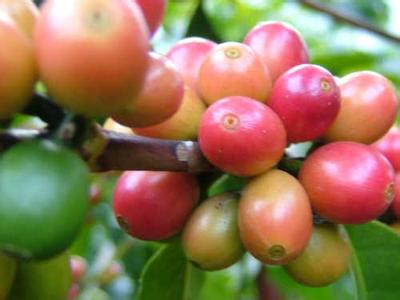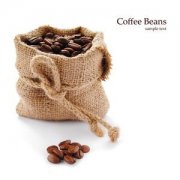Production technology and principle of decaf coffee
Decaffeinated coffee is coffee with only trace amounts of caffeine. Coffee contains many ingredients and substances, among which caffeine has a significant impact on the human body. Decaf coffee is the best choice for many coffee drinkers who are not physically fit to consume caffeine.

In general, Arabica coffee beans contain 1.1% to 1.7% caffeine, while Robusta coffee beans contain 2% to 4.5% caffeine. Decaf coffee is regulated to contain no more than 0.3% caffeine in brewed coffee. That means no more than 5 milligrams of caffeine in a cup of decaf coffee.
The decaffeinated step must be carried out in the green coffee bean state. There are three main types of treatment methods available to remove caffeine: traditional/European processes, Swiss water processes (SWP), and CO ˇ supercritical processes. All three methods are very effective in removing most of the caffeine, leaving only 2 - 3% of the original caffeine in the coffee bean.
European/solvent treatment (The European or Solvent Process): There are two variations of solvent treatment. The first is direct solvent treatment. First, steam is used to open the pores of coffee beans. The solvent is added directly to the coffee beans. After the solvent is fused with caffeine, it is carried out by steam. The other is indirect solvent treatment, which begins by dissolving all the flavor in the green coffee beans into hot water (This is a hypothetical state, not really dissolving all the compound beans), after a period of time, the coffee beans are separated from the hot water with "all" flavors (including caffeine) dissolved, and then the hot water is added to attract caffeine. At this time, caffeine will combine with the solvent and float to the surface, which can be easily removed. After that, the caffeine-free hot water will be combined with the coffee beans again. Green coffee beans will absorb the remaining flavor factors back.
The Swiss Water-Only Process: This commercially developed, highly efficient treatment process consists of two main steps. The first step is to pour the green coffee beans into hot water, which removes almost all of the flavor factors, including caffeine, from the beans and discards the initial batch. After that, the hot water loaded with all the flavor factors is filtered out by activated carbon filter, and the rest is the hot water loaded with pure flavor factors. This hot water is called "Flavor-charged Water" in Swiss water treatment method. This water contains saturated, all the flavor factors that coffee beans should have, but lacks caffeine. This special water is the most important medium in the next decaffeination process.
Soaking a new batch of green coffee beans in flavored, caffeine-free water loaded with flavor factors releases caffeine from the green coffee beans, but does not release flavor factors. In this way, the original flavor of the coffee beans will not be greatly diminished. Obviously, the flavor factor in the flavor loaded water is already close to saturation, so no more flavor factors can be dissolved, but there is still a lot of room for caffeine to dissolve.
After this decaffeinated, flavor factor retention process, the green coffee beans are dried and sold directly, and the caffeine-absorbed flavor is loaded with water, which can be repeatedly decaffeinated with activated carbon filters and reused.
Carbon dioxide supercritical treatment method (CO ˇ Process): carbon dioxide supercritical treatment method is to soak coffee beans in liquid carbon dioxide, under high pressure, carbon dioxide is semi-gaseous, semi-liquid state, carbon dioxide in this state can actively combine with caffeine, and caffeine is most regretful to be filtered by exhaust activated carbon filter.
Either way, the extracted caffeine is resold to cola companies or pharmaceutical companies for reuse, and no caffeine is wasted. As for the flavor of decaf coffee, the so-called fish and bear's paw can not have both, since the more needed is decaf coffee, it can only abandon the flavor.
(Source: Coffee Aesthetics/Original Title: Decaf Coffee Decaffein-1-What is Decaf Coffee and How to Handle it)
Important Notice :
前街咖啡 FrontStreet Coffee has moved to new addredd:
FrontStreet Coffee Address: 315,Donghua East Road,GuangZhou
Tel:020 38364473
- Prev

Learn new coffee processing methods together
Because he likes coffee and is interested in agriculture, he buys a coffee estate in Nicaragua and grows good coffee; because he seeks a good cup of coffee, Chen Ruoyu pursues the ultimate in every link from seedling to becoming a beautiful woman in the cup. On the afternoon of December 12, Ms. Chen Ruoyu, President of Taipei Boutique Business Development Association, visited Guangzhou Coffee Expo site and coffee lovers.
- Next

How to get the perfect taste of coffee know what is good coffee
To really understand what is good coffee, we must start by understanding the taste of coffee. The history of measuring the taste of coffee can be traced back to the 1850s, when Professor Lockhart (E. E. Lockhart), a chemistry professor at the Massachusetts Institute of Technology, conducted a series of surveys on coffee taste preferences, and Professor Lockhart published his
Related
- Beginners will see the "Coffee pull flower" guide!
- What is the difference between ice blog purified milk and ordinary milk coffee?
- Why is the Philippines the largest producer of crops in Liberia?
- For coffee extraction, should the fine powder be retained?
- How does extracted espresso fill pressed powder? How much strength does it take to press the powder?
- How to make jasmine cold extract coffee? Is the jasmine + latte good?
- Will this little toy really make the coffee taste better? How does Lily Drip affect coffee extraction?
- Will the action of slapping the filter cup also affect coffee extraction?
- What's the difference between powder-to-water ratio and powder-to-liquid ratio?
- What is the Ethiopian local species? What does it have to do with Heirloom native species?

